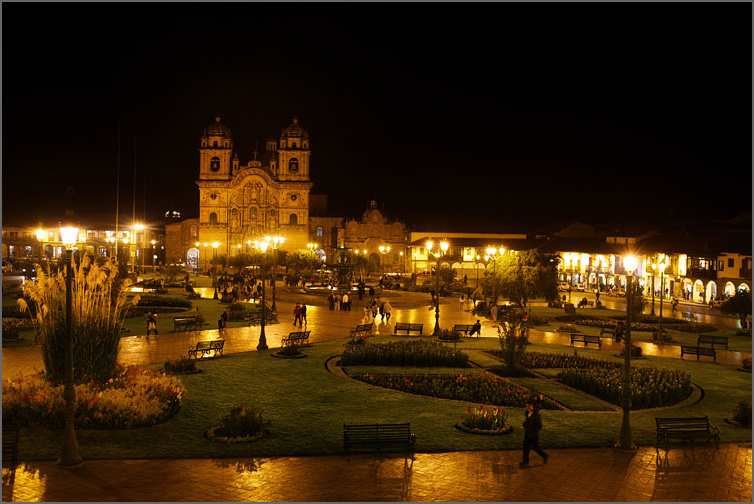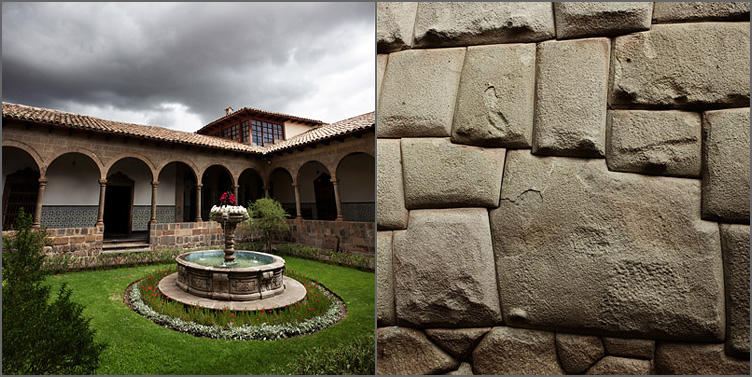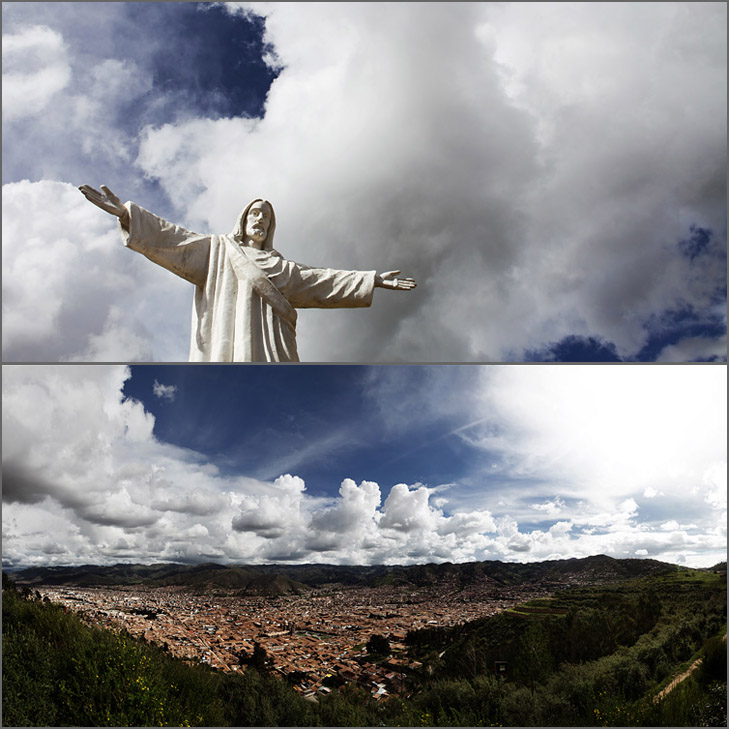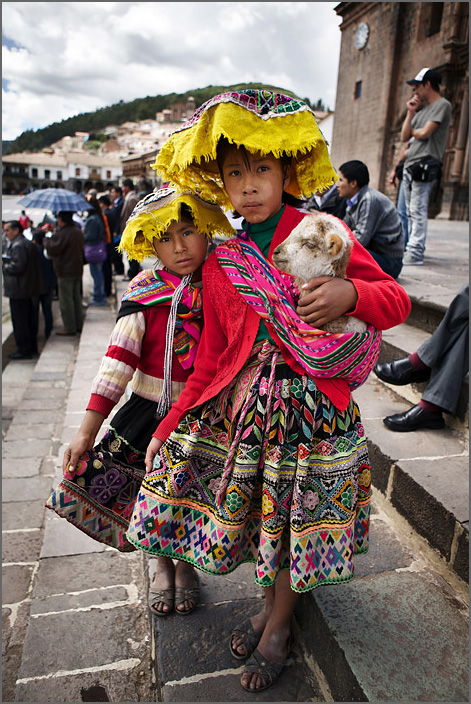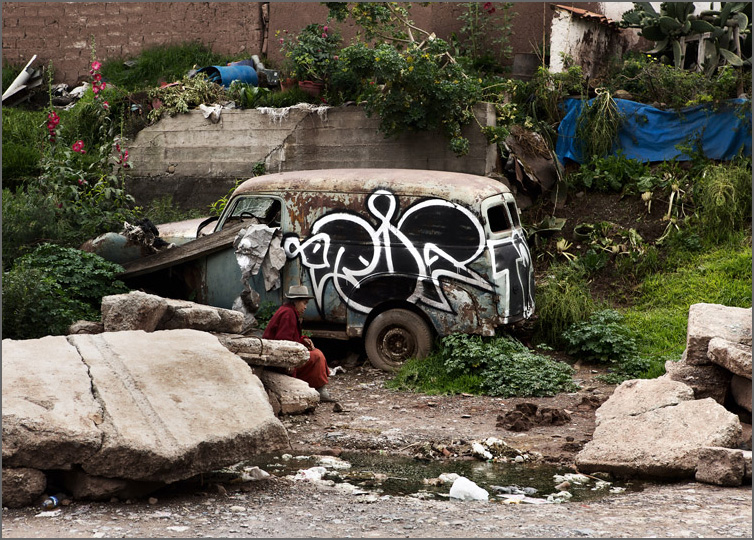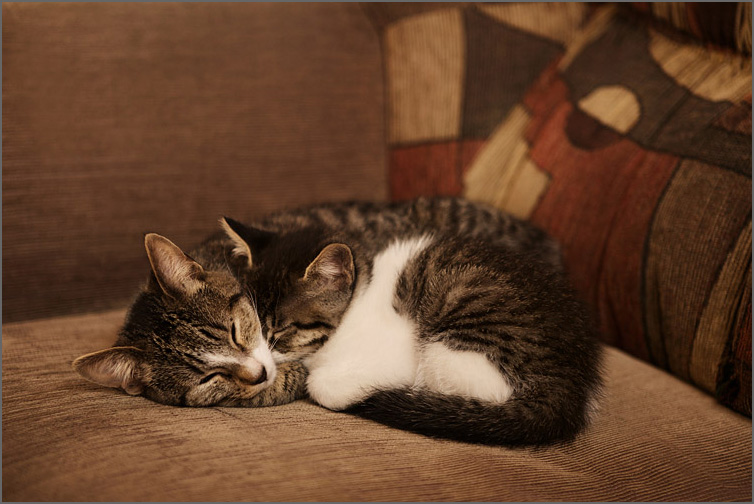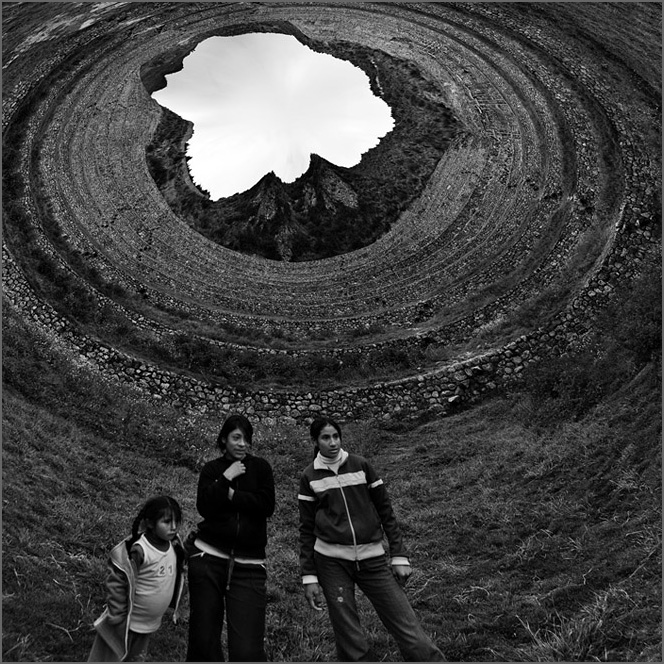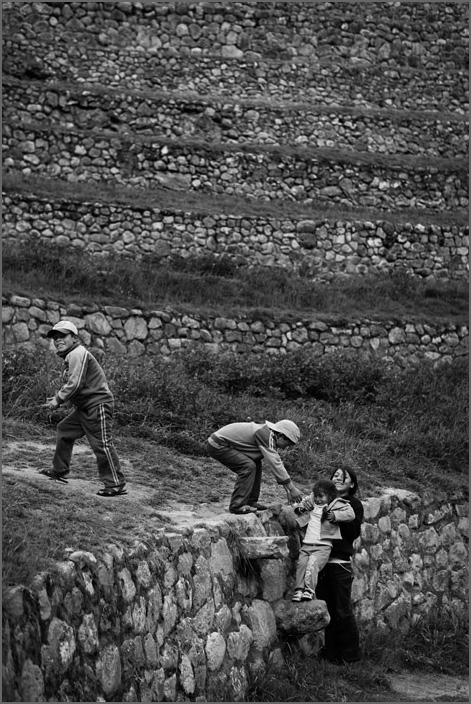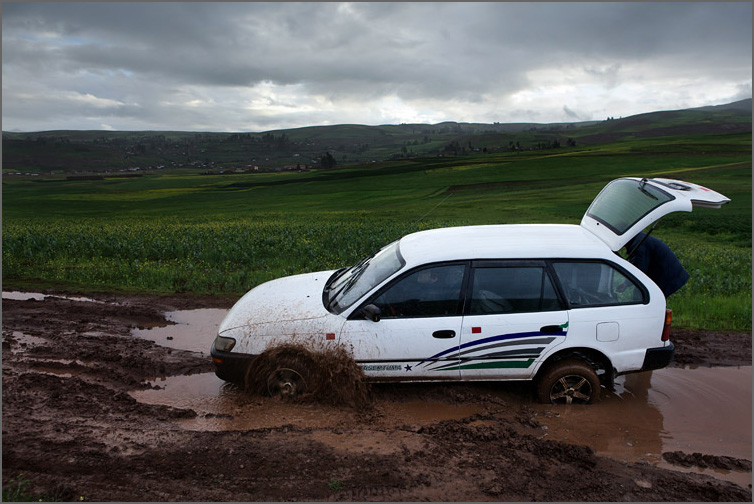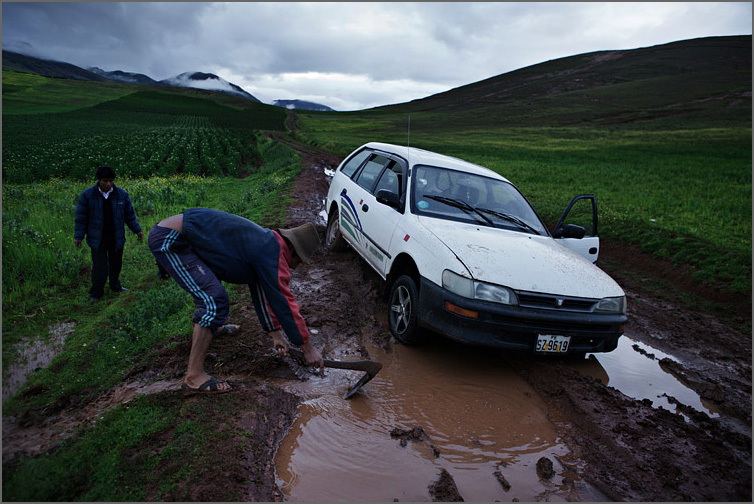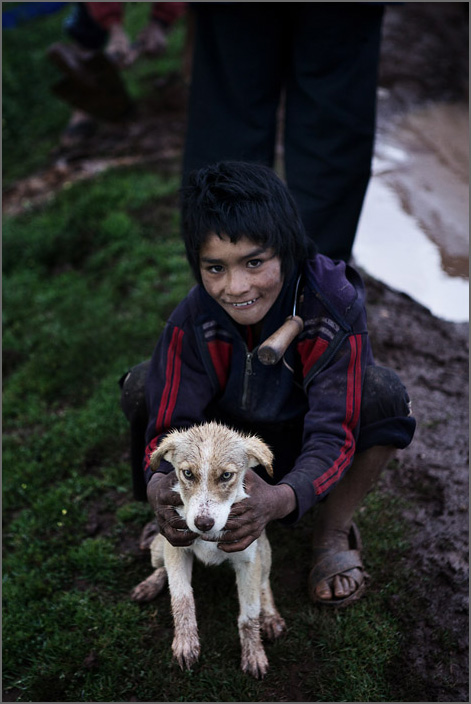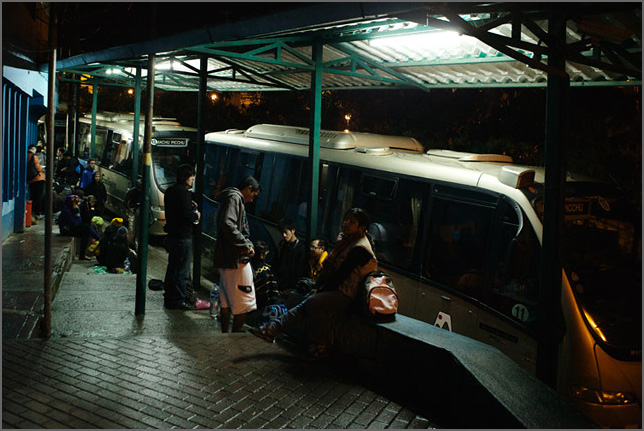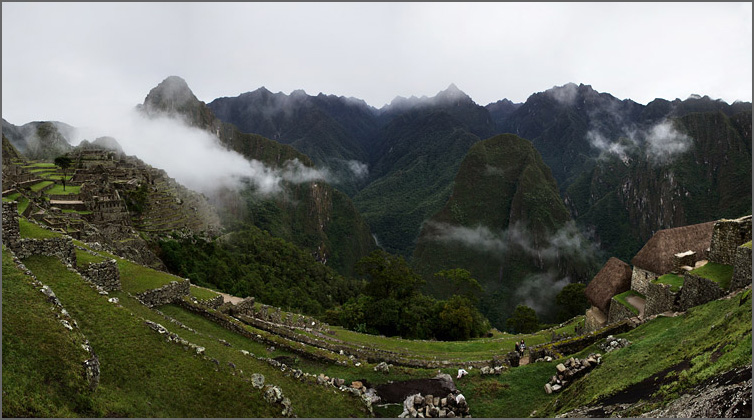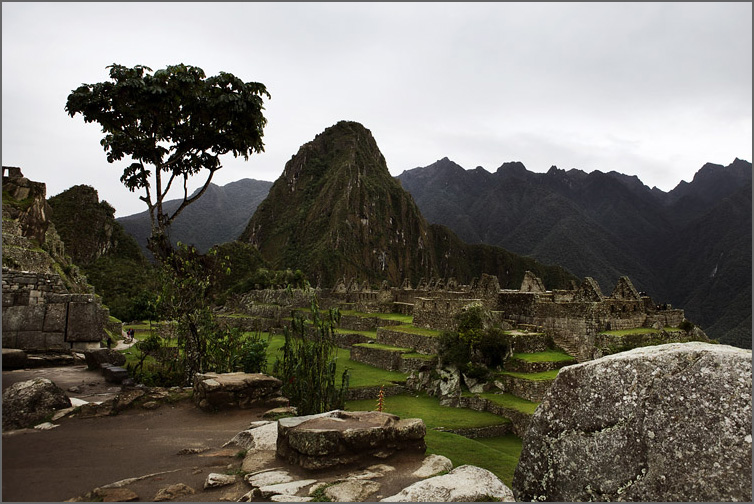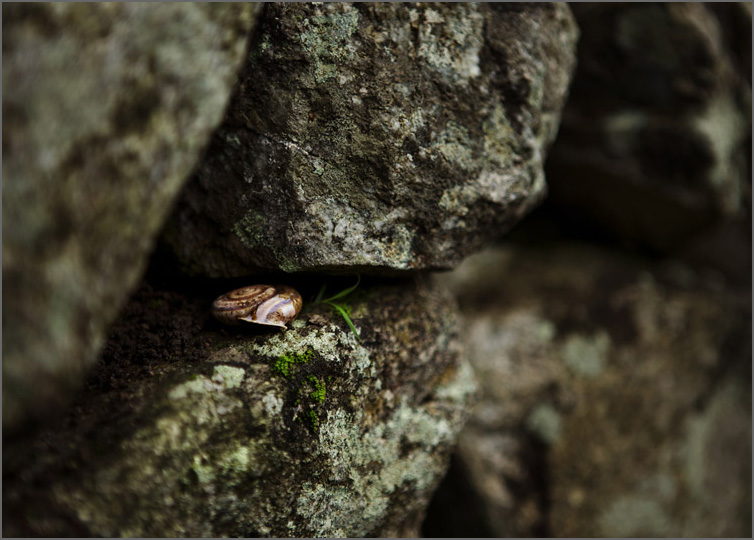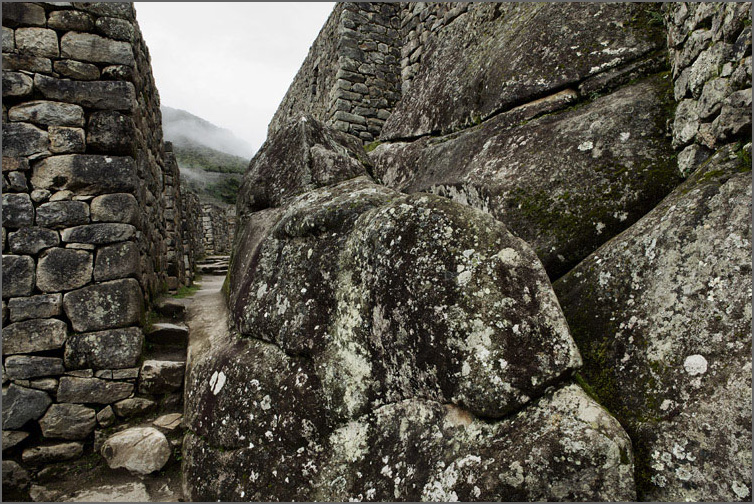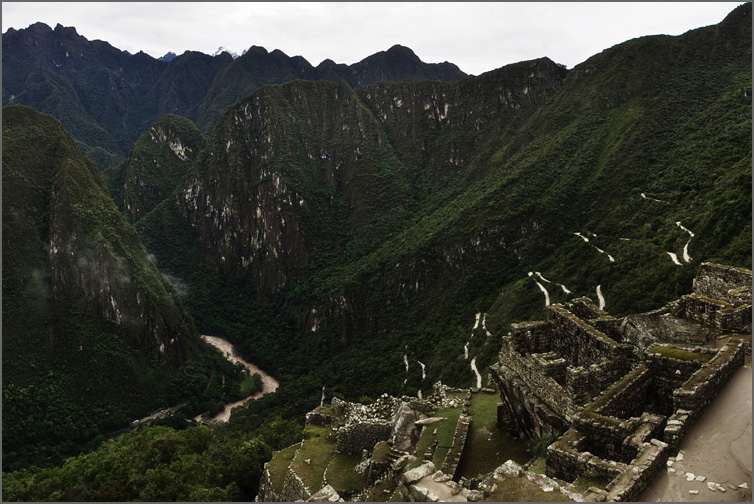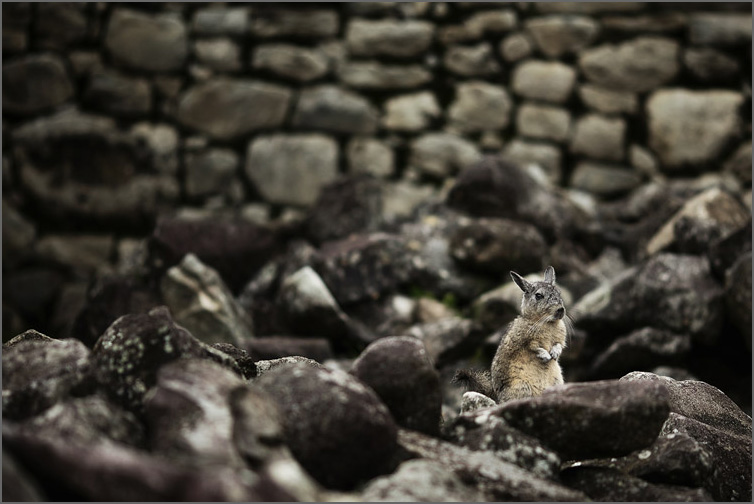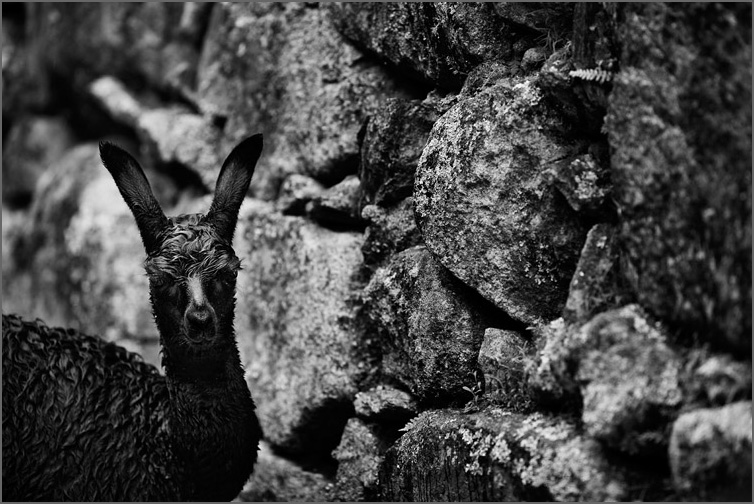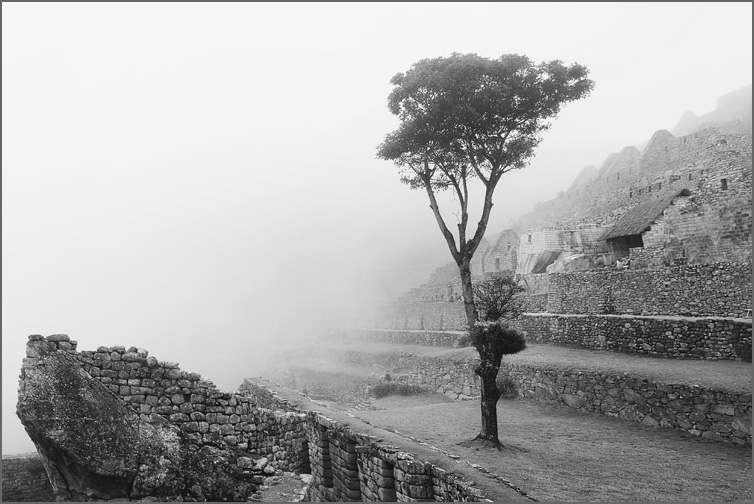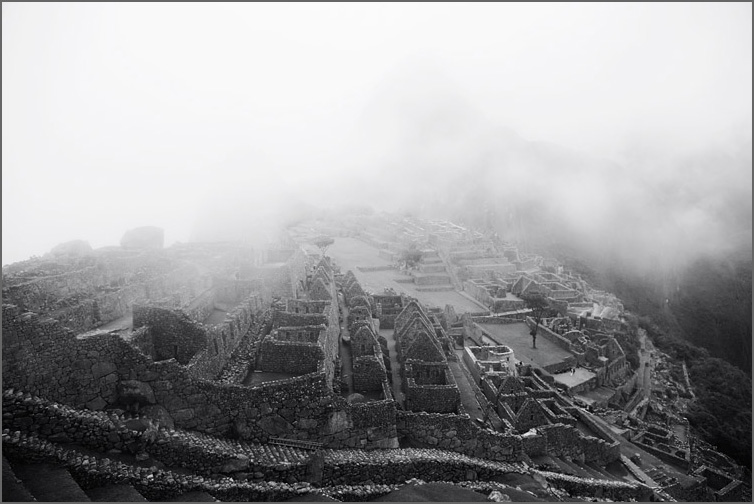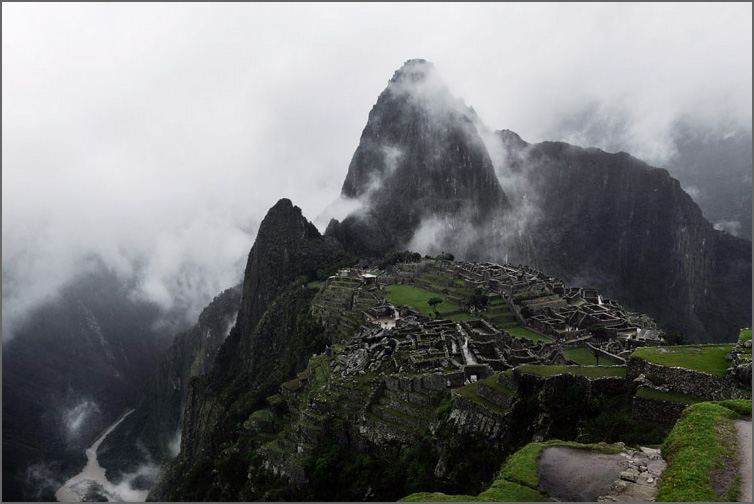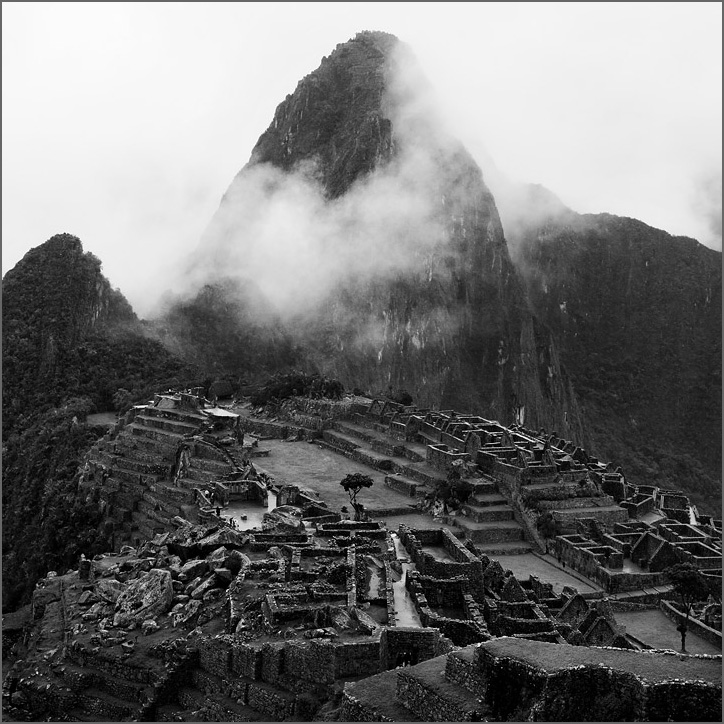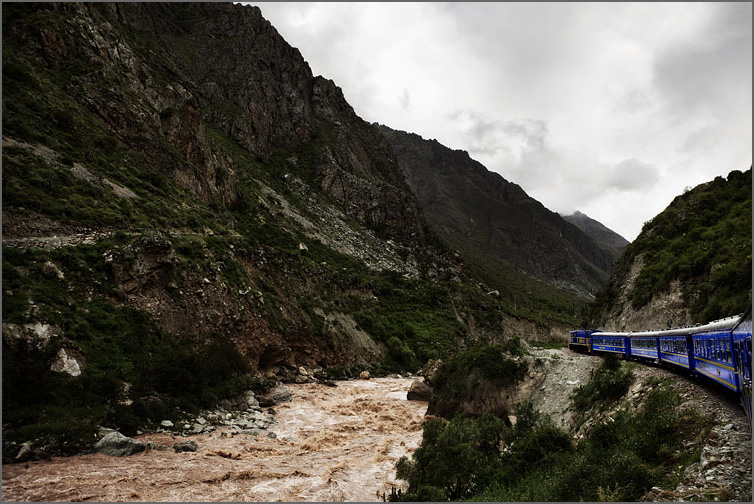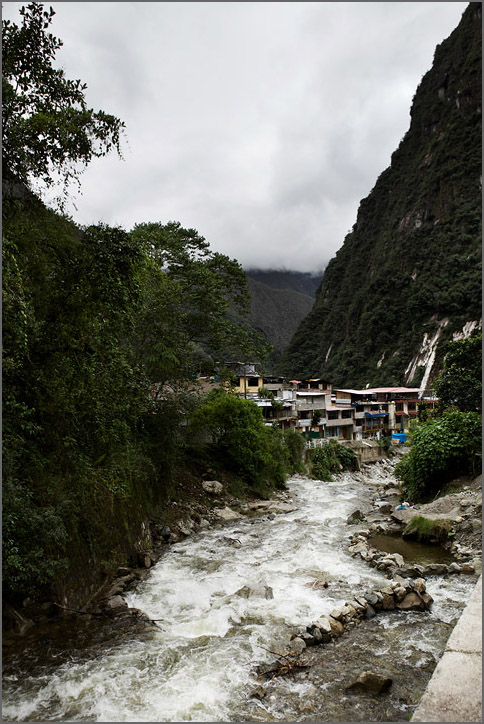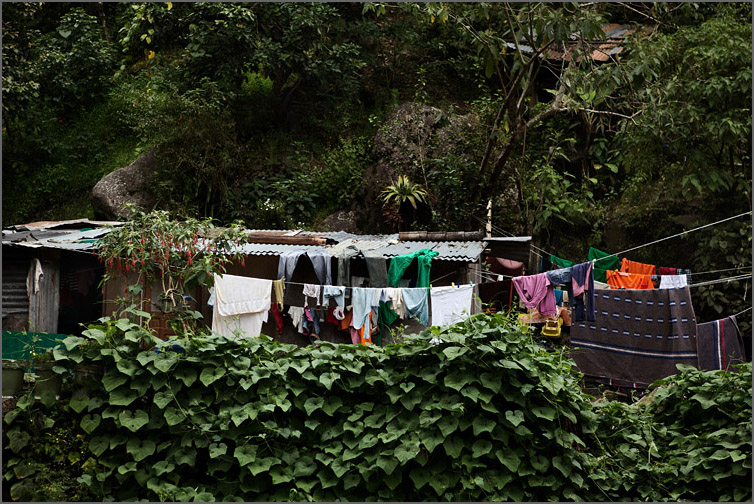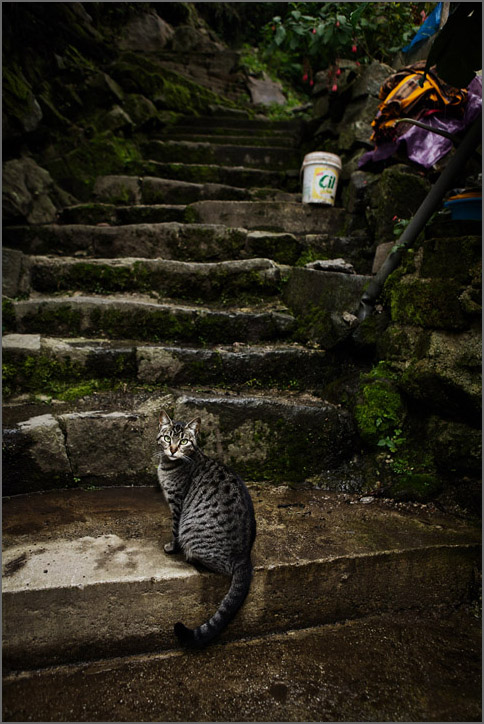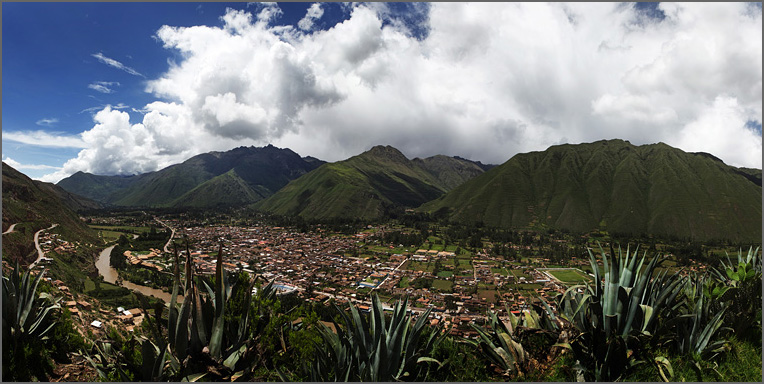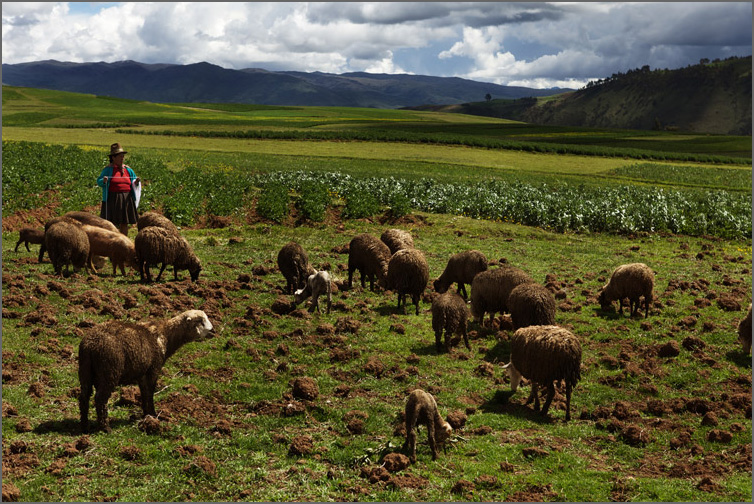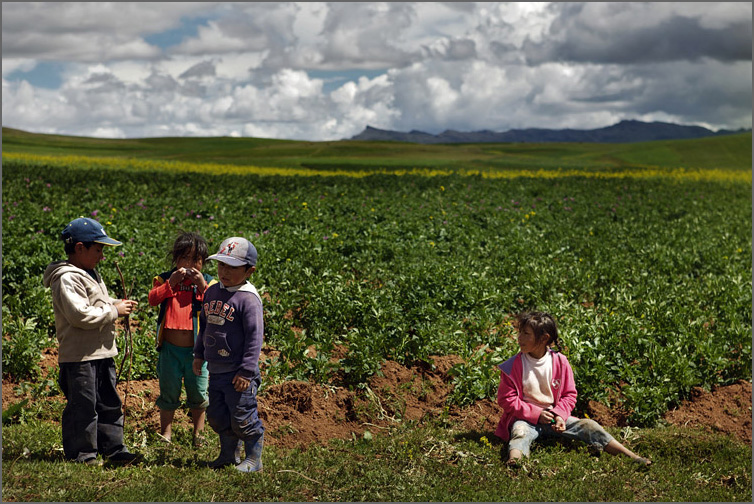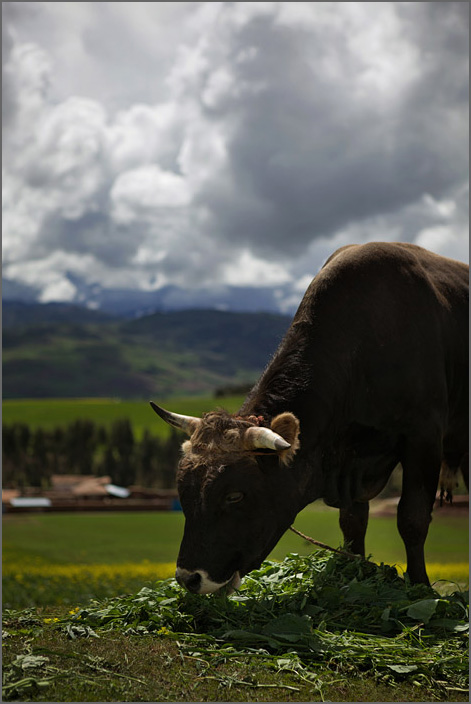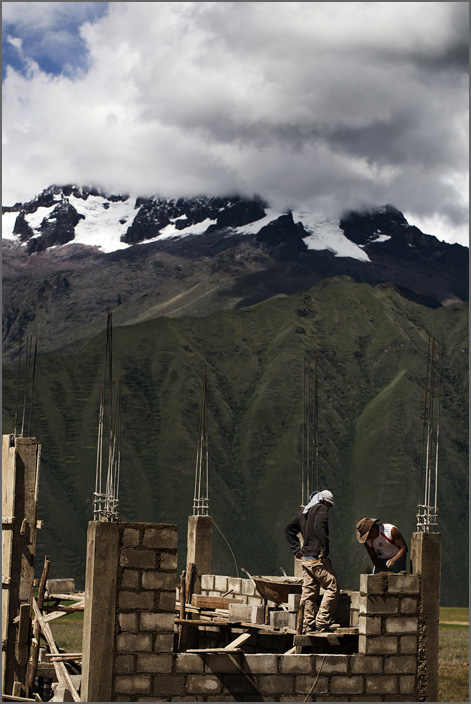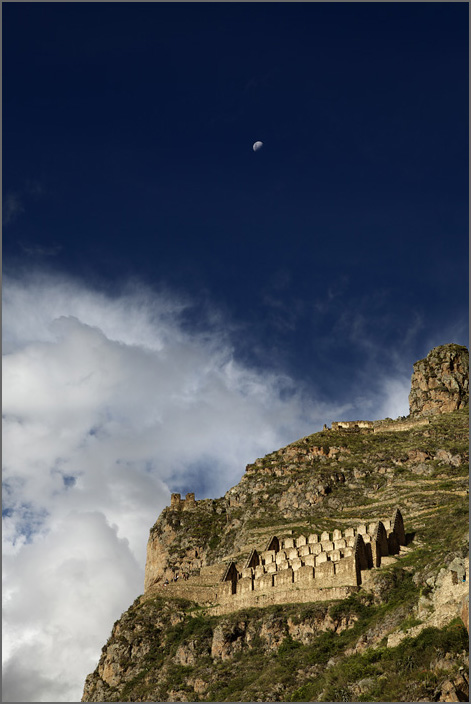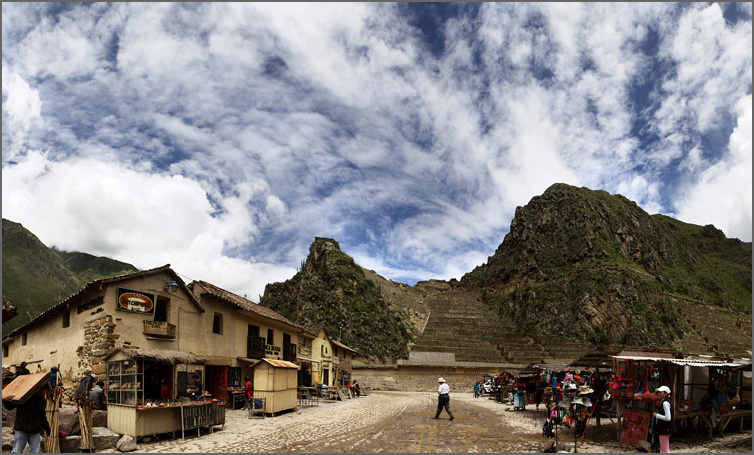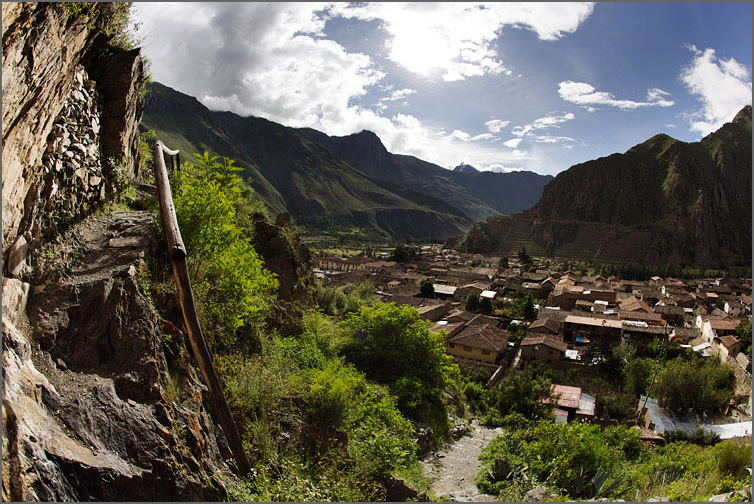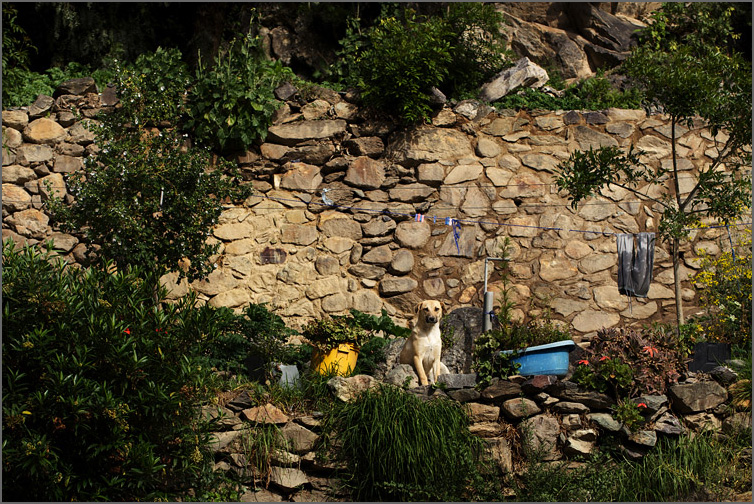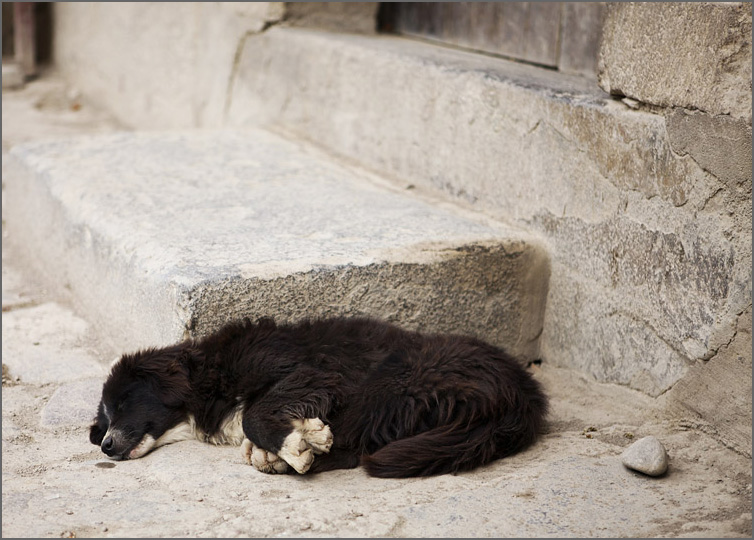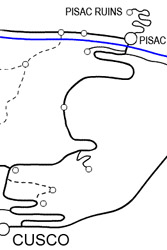
I planned a simple day trip to visit the ruins in Pasac, a little town about an hour outside of Cusco. It houses a spectacular set of Incan ruins and also features a popular market on certain days of the week. I wanted to see both, so I visited on a Thursday. Over the course of the day events occurred that shook me to the core. It was definitely a visit I will never forget.
The public bus to Pisac cost only about $2, so I spent the journey with a bus stuffed with locals and a poet reciting spanish literature to those who would listen. The bus dropped us off at the edge of town and I walked up the hill to shop in the market. Along the way, I bought some treats at a little bakery. The change they gave me was short 10 soles, so I was glad I made a habit of counting carefully. I was given incorrect change in Peru more times than I can count. I suspect that some locals think tourists won't notice.
At the market, locals sold everything from hats and trinkets to fruit and freshly cooked french fries. I took the opportunity to shop for a few gifts and souvenirs.
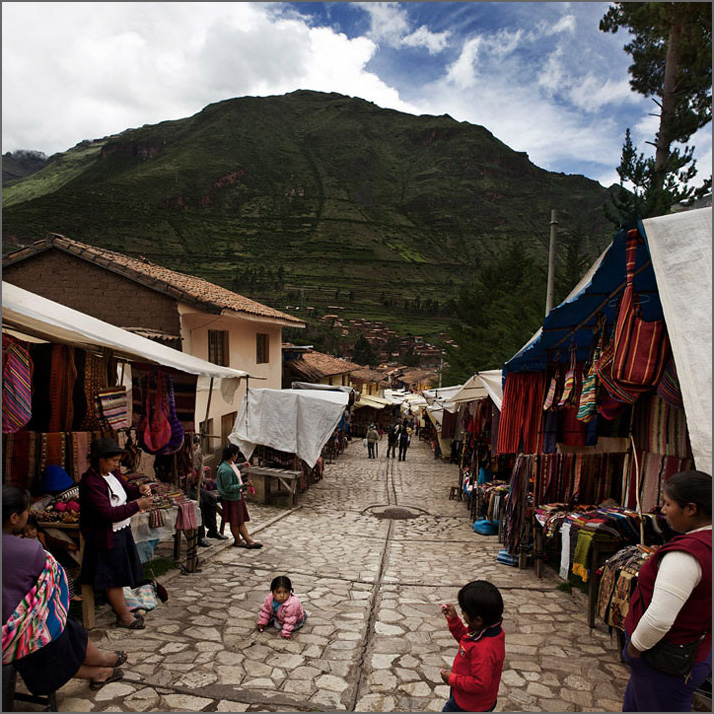

Before long, I began to draw the attention of brightly costumed locals, similar to the girls I photographed in Cusco. The market was crawling with kids and women dressed up for pictures and hoping to collect tips from the girl with the big camera. My first reaction was 'I already have photos of kids dressed up, why do I need more?' Then I became attracted to their different personalities and stories. They had a combination of desperation and hope in their eyes that drew me to tell their stories through these touristy photographs. Working with these beautiful people for the short seconds they gave me hit me in a way that I can't really describe.
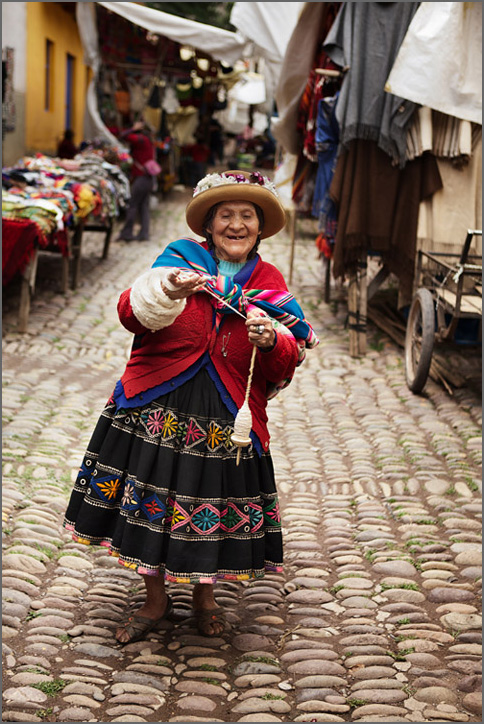
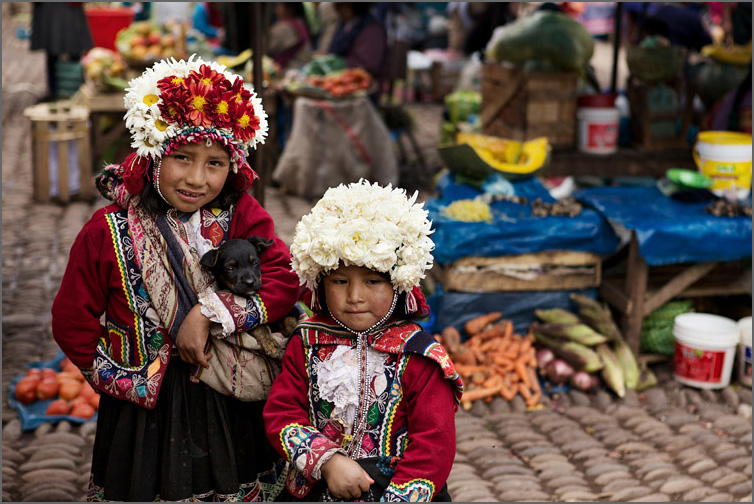
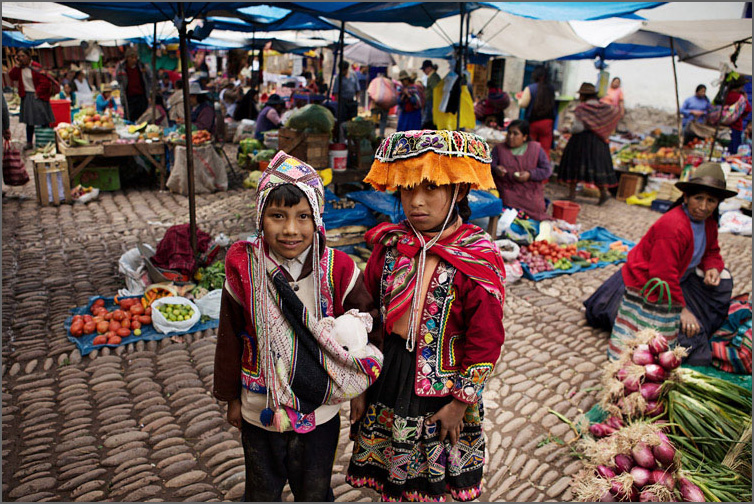
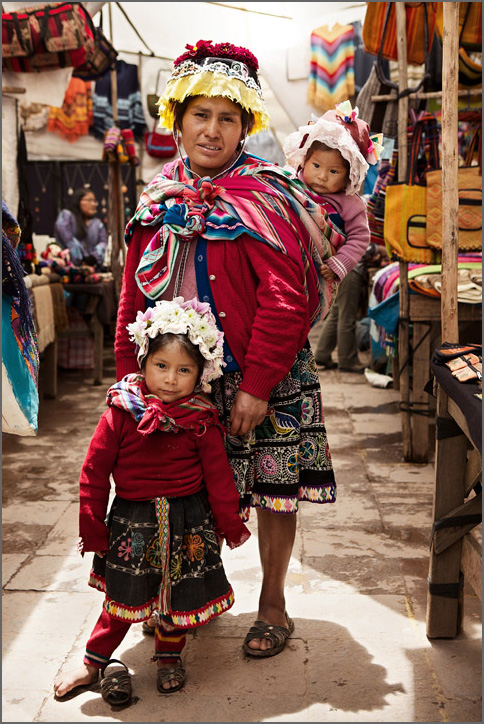
I decided it was time to grab a taxi to the ruins. I was running a little low on cash, but I had plenty to get myself up the mountain by taxi, walk down the mountain by a convenient shortcut provided inside the ruins, and get back to Cusco...so I thought.
The taxi took me up a long, winding road to the ruins. Along the way, the driver asked me what ruins I had seen so far. We chatted calmly until he asked me if I had a tourist pass. I had no idea what that was. The only ruins I had paid to see so far were the ruins of Machu Picchu. In all my research, I hadn't seen any mention of the price to get into the Pisac ruins. I am not sure how I missed it, but it cost 70 soles to get in! I didn't have the cash to get in. In fact, I didn't have enough cash to pay the taxi driver to take me down the mountain and then take the bus to Cusco! I tried to convince the gate keepers to let the taxi driver take me to the shortcut path down the mountain, but they insisted I had to pay to get to the shortcut. The taxi left me on top of the mountain with only one pathway down: a long, hot 9 mile hike down a two lane highway with no shoulders. I decided to make the most of the hike and photograph the towns and farm animals on the way down.
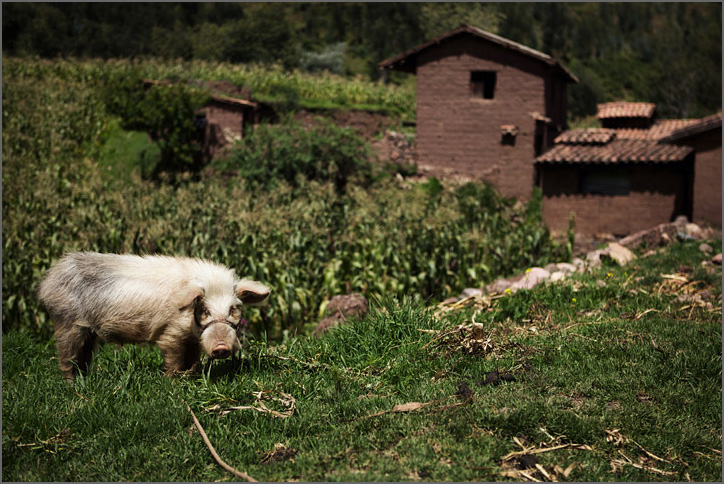
Almost every home has a little good luck charm on the roof. The charms are as unique as the people who put them there.
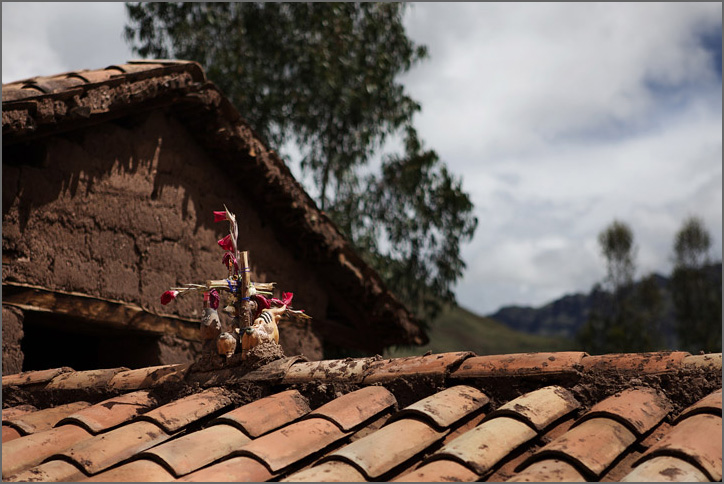
The sun came out from behind the clouds and became almost scorching, making the walk a chore. I rounded a bend and saw a tiny, bent over old woman hobbling slowly up the hill. She was barefoot, walked with a cane, and was carrying at least as much weight as I was, if not more. I gained an immediate appreciation for my comfortable shoes and downhill slope.
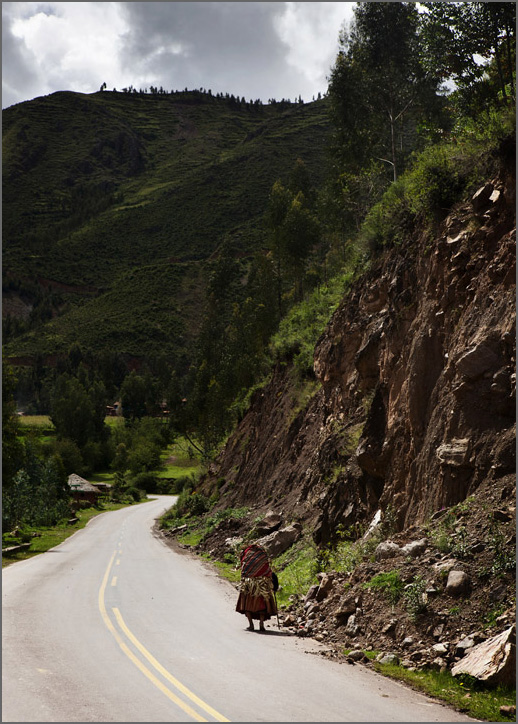
As I passed her, she began calling out to me in Kechua, the native language of the rural people. She reached out to me, crying in words I could not understand but whose meaning was very clear. I gave her some coins, but she did not move on after accepting them. She continued to plead with me in Kechua as I explained in Spanish that I was walking because I didn't have money to pay a taxi.
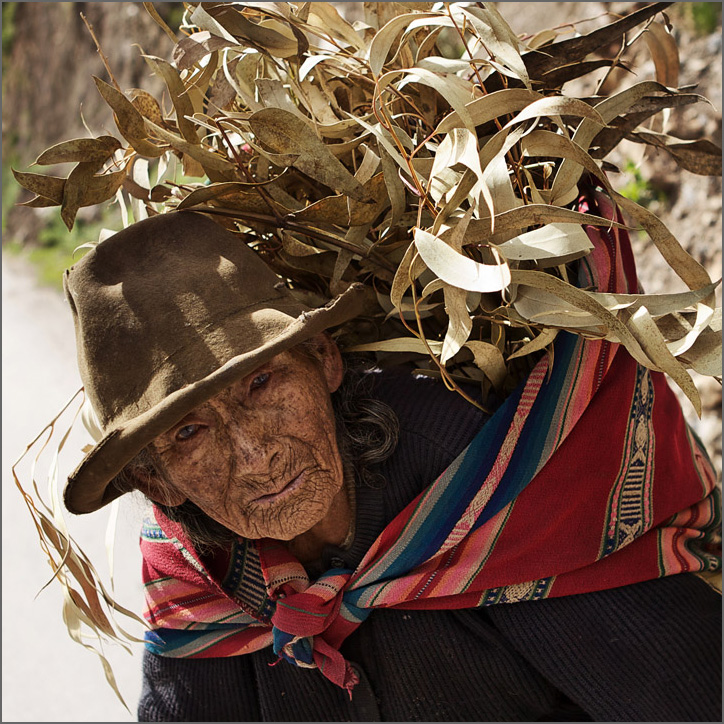
I remembered I had an apple in my backpack, so I gave that to her. She proceeded to show me that she only had one tooth left, so she couldn't eat the apple. I felt so defeated because there was nothing else I could do. After another minute of pleading, I realized she was saying the same phrase over and over. Though it was a little garbled, I realized she was saying "Gracias por la manzana," "Thank you for the apple." I smiled and walked away as she started back up the mountain.
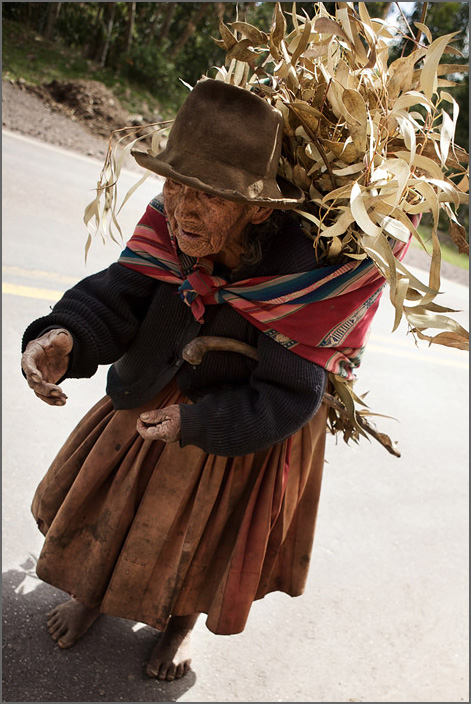
I was about a third of the way down the mountain when I passed a row of deserted old houses. Two dogs ran from their porches and barked at me. Normally the dogs are very docile and friendly, but I soon realized there was a good chance one of these dogs would attack me. They kept close to my heels, growling and barking as they followed me for at least 50 feet. I knew that running was the worst thing I could do, so I kept calm and walked at an even pace. I noticed a pack of four dogs ahead of me, and started getting really scared. At that moment, a taxi drove up and the driver offered to drive me to Cusco. I explained that I didn't have 20 soles to give him for the ride, but he offered to do it for 2! I jumped in, on the verge of tears, and rode the rest of the way down the mountain.
I could have found an ATM and gotten the money to go back up the mountain, but after all that I just wanted to go back to Cusco. Thankfully the ride home was uneventful, and I spent the rest of the night packing and preparing for my journey back to Brazil.

